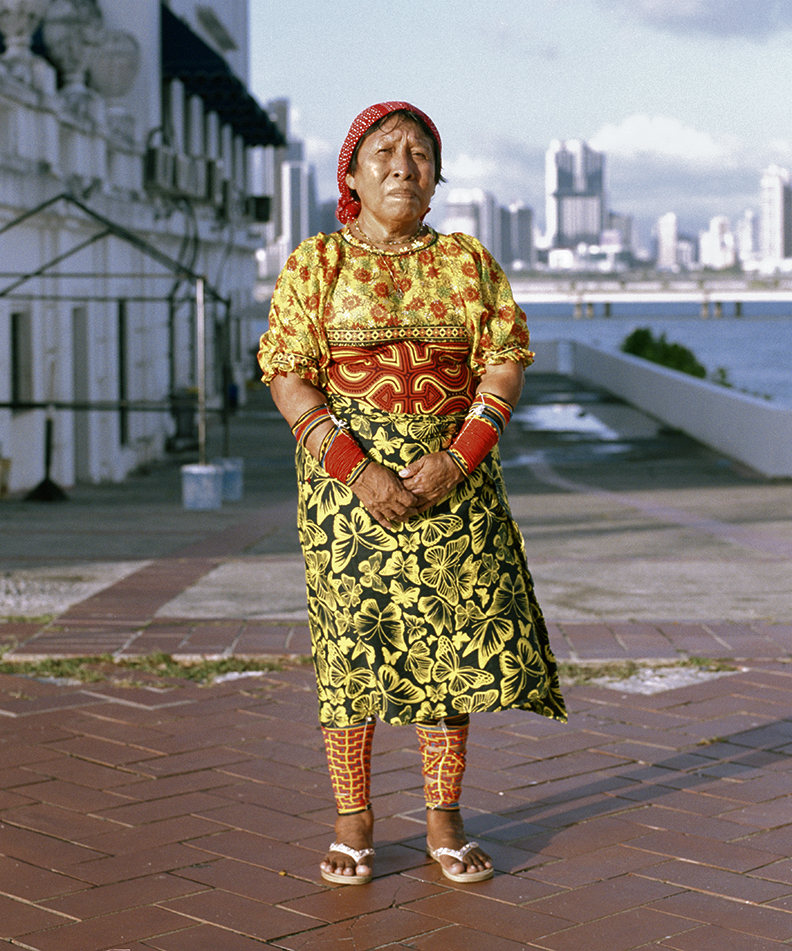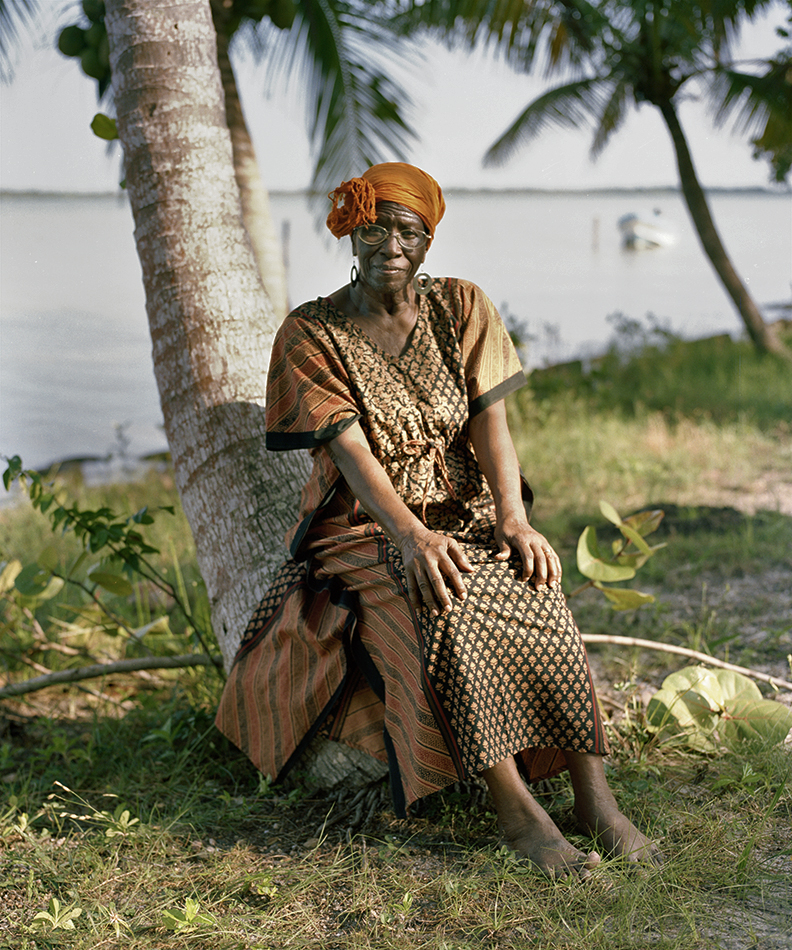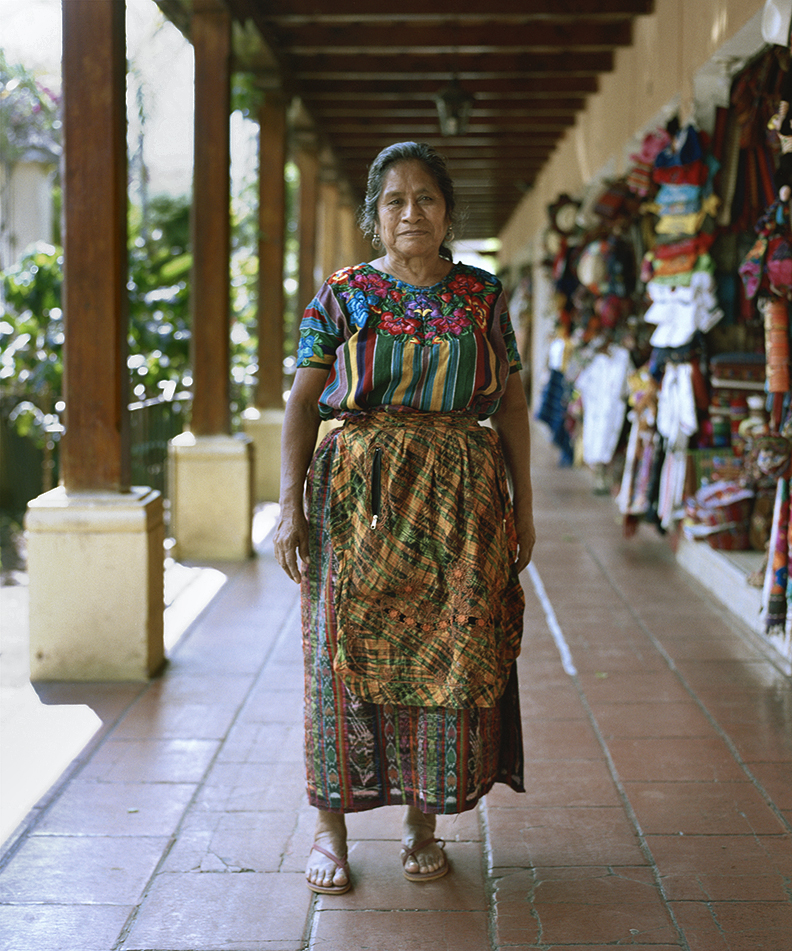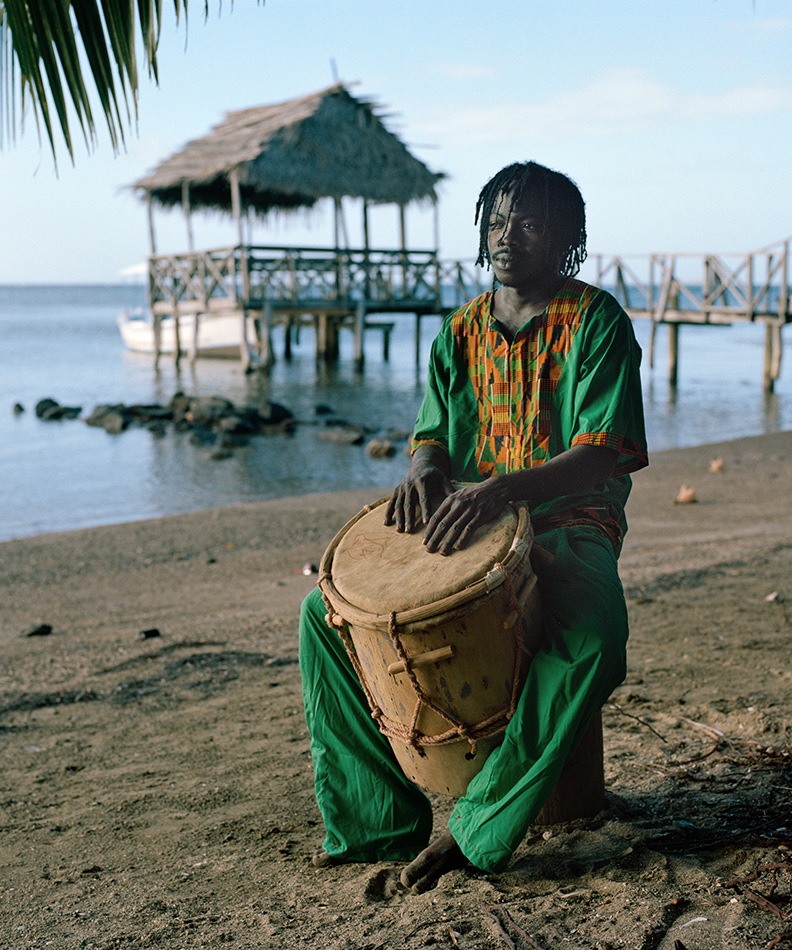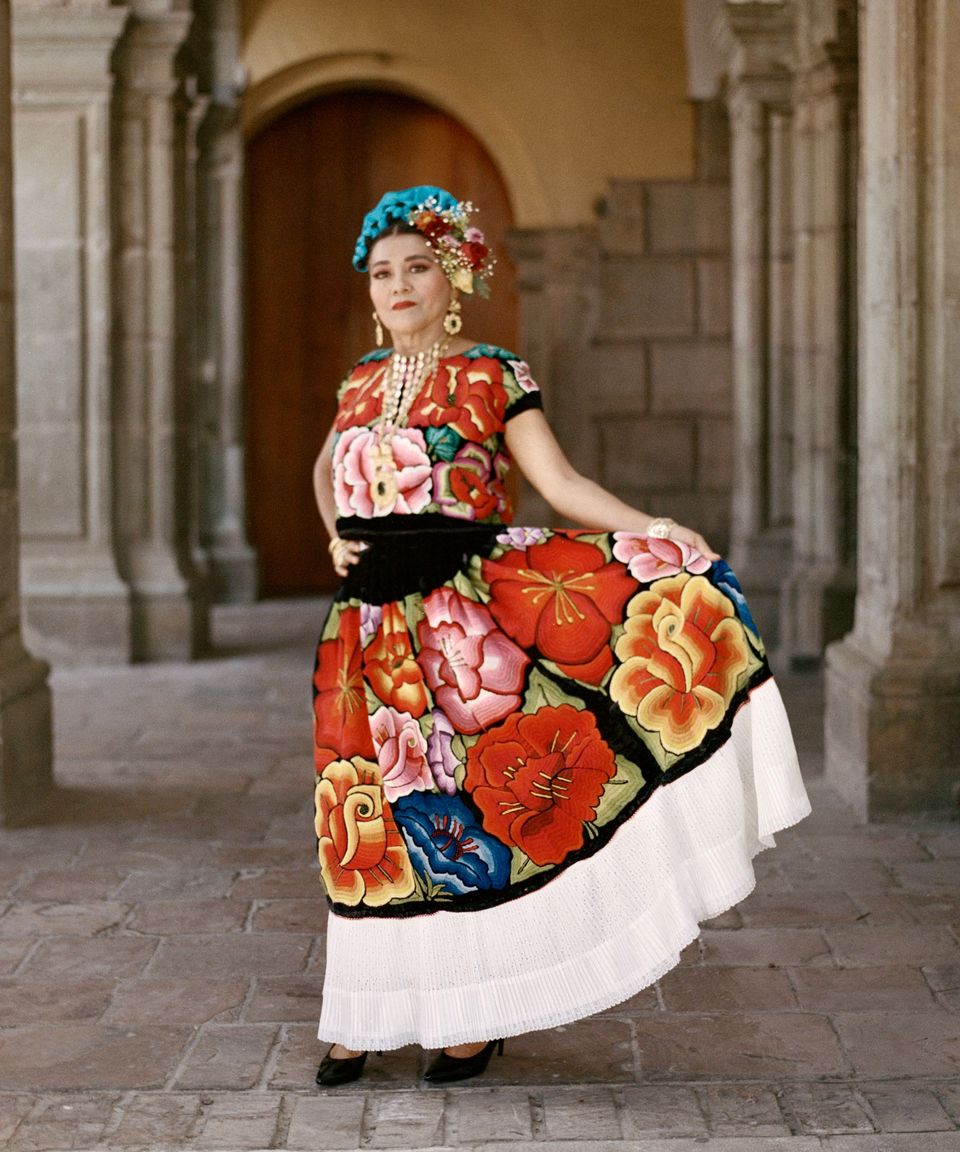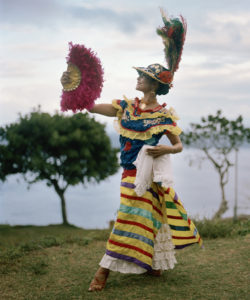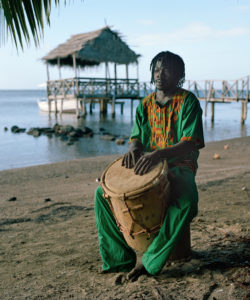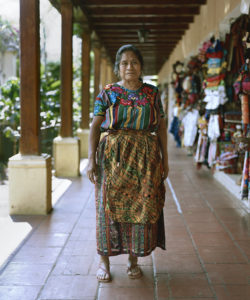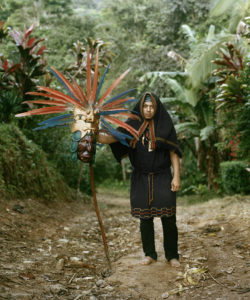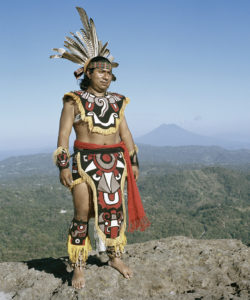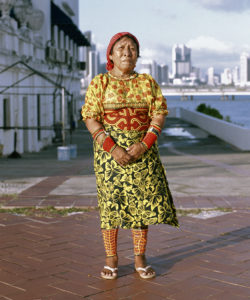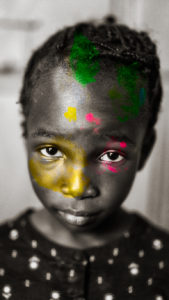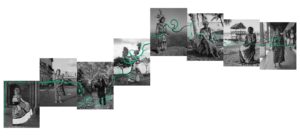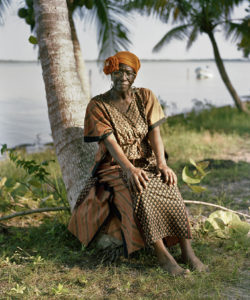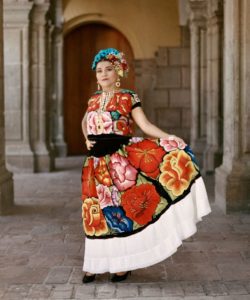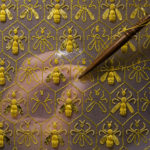MAGAZINE
Quest of Sages: In Search of Global Wisdom
Interview with Benjamin Wightman by Despoina Tsoli
In 2017 Benjamin Wightman began traveling across the world in search of unique architectural structures. Soon his journey radically shifted into a global adventure driven by his curiosity on issues concerning identity, humanity, culture and his love for traveling. What once was a journey about commercial photography quickly became a quest for the undiscussed beauties of underserved communities and the wisdom and stories that lay within them.
Since then Benjamin’s artistic project Sages has evolved into a full-scale non-profit organization, Quest of Sages, that works with cultural and artistic organizations globally in order to help underrepresented communities, and promote an image of art and activism as a single entity.
Despoina: Let’s start with how you got into photography.
Benjamin: I was on a family vacation when I was maybe 16 and my grandfather had a digital camera. At the time it was brand new, nobody really had digital cameras and so he let me just pick it up and play around with it for the week. At some point we were at the beach and I just started taking these really artistic and interesting shots. People started commenting on them and saying that they looked really nice and at the time I didn’t really have any other hobbies or any other passions or anything, so I thought, ‘Oh, maybe there’s something interesting to this’. Later, when I was looking at colleges, I thought I wanted to pursue a photography degree so I applied, I went to a school and I started a fine art photography program. I was expected to take ceramics and painting and sculpture and things that at the time I didn’t really care that much about. I wanted to learn digital techniques and become a commercial photographer.
The program didn’t really match up with what I wanted to do so ended up switching to business because I didn’t know what else I wanted at the time. After a few years, I graduated, I moved to California and I went back to photography school, but it was a technical school for commercial photographers. I took fashion photography, architectural photography, advanced editing and I worked as a photographer for a few years. When I did my first personal project I decided, as a matter of fact, I wanted to be an artist. It kind of all came full circle. I pushed back all the digital and all of the commercial stuff and I went back to what I didn’t want to do in the beginning.
In this beginning part of your career how did you find your own personal style and what interests you as a photographer?
I struggled a lot when I was in that program because there are three avenues you can take as a photographer. You can either be a commercial photographer, a fine art photographer, or you can be a documentary photographer. I really struggled with pinpointing one because I approach photography, very conceptually. I come up with an idea well before I take the camera out. That’s a completely different style than a documentarian who just picks up the camera, walks out the door, observes, and takes photos of what they can find. That was never me, however, I was really inspired by the outside world and culture and traveling and all of these things that a typical documentarian would photograph. So over the course of years I just sort of played with the idea of both; how can I be conceptual and purposeful while also peaking my curiosity of the world?
I guess that plays into what your art has evolved into now because it’s very conceptual still, you use a lot of mixed media. In a lot of your work, you use a painting or liquid emulsion. Did you always have this interest in mixing different media?
No. At the time, as I said, I took some drawing, sculpture and installation classes and I just wasn’t into it. I was really focused on commercial photography, I thought “I’m going to travel the world and be a photographer.” I didn’t really value art in that way. But then over the years, it flipped. It was a personal project that I did a few years ago that mixed painting and photography and to be honest with you, I can’t even pinpoint what initiated it. I can’t think of how I even conceptualized the idea of bringing painting into it the first time. It was also just through a lot of research into the art world and going to galleries and following the contemporary art world. It opened my eyes to the possibilities and I found myself less and less interested in just photographic exhibitions. It wasn’t as interesting to me as looking at these really conceptual pieces of work where you can derive different meanings. So I think it was a combination of these things.
“I think there’s something really unique about looking into the eyes of these individuals, but also simultaneously seeing a part of their creative soul. You see something they made and that’s really special.”
And now a lot of your creative practice revolves around very complex themes, like humanity, identity, diversity and culture. How did you evolve into these themes? Was it something that always interested you in your practice?
I took a trip in 2017 and I ended up going to 30 countries. At that time I was still planning to be an architectural photographer. My dream was to photograph these luxury five-star hotels and resorts around the world, travel and live that life. But it was kind of; I don’t know if shallow is the right word, but it was sort of surface level. There wasn’t anything conceptual or purposeful that was coming out of that other than the fact that I wanted to see the world and that’s about as far as it went. But during that time I met new people, and travel as cliche as it sounds, it just changes you. You learn things about yourself. During that trip I went to 30 countries in eight months, so I came out of that much different than I went into it.
That’s also the time when I did my ‘Saints’ project, where I started using mixed media for the first time. The owner of an orphanage in Nairobi essentially found me and invited me to stay so I wanted to create some sort of project that could benefit them somehow. I wanted to thank them or do something with a purpose or with a cause. So I came up with this idea to photograph each one of the children, bring paint and paper to the orphanage and just tell them to make a painting, whatever they wanted. I then digitally photographed their paintings and I digitally photographed them and I blended the two together in Photoshop. I turned their portraits to black and white so that the colors of the paintings could come out and I used different blending modes so that it looked like it was painted right on their faces. That definitively I can say, was the turning point in everything.
During the years I was doing commercial photography I never really showed off my work. I was never really that proud of it. I wasn’t having big conversations about these hotels or whatever I was working on, but with that project, to this day, I feel a really deep connection with ‘Saints’. I think there’s something really unique about looking into the eyes of these individuals, but also simultaneously seeing a part of their creative soul. You see something they made and that’s really special. I also hadn’t seen any other artists or any other work that really collaborates in this way. Of course people blend photography and painting all the time, but playing with the idea of the artist versus the subject; I think there’s something to it.
I think it’s actually so fantastic that you did this because you see this phenomenon in travel photography, where the individuals that are photographed, all too often end up just being the subject of the photograph, and are basically objectified. So bringing part of their identity back into the photograph by using their own paintings, I think is such a wonderful way to break away from this pattern.
Yeah, absolutely. I couldn’t agree more. You know, I was always inspired by some of these really big photographers that take these beautiful portraits of people from different cultures all over the world but one thing that always bothers me is the title of the photo. If it just says Tunisian woman or Kenyan child, it drives me insane. When these portraits are so personal and so up-close, you had to have had some sort of exchange with them, you had to have known their name. I think not including their names, as you said, does objectify people.
Let’s talk about your big project, Quest of Sages. So I want to start by just taking it way back to the beginning, to the very early stages of it. How did the idea even come up? Did it formulate immediately into what it is now?
It absolutely did not formulate immediately. It took years. When I got back from that original trip where I did that project in Kenya, the first seed of what Quest of Sages would become, I had a really big problem with the Saints project being completely digital. The fact that it’s only going to live either on-screen or I can just print out 5,000 copies of it, took away from the concept to me; the idea of the uniqueness, humanity and the individuality of the person. It diluted the value of the work, I thought. So the first answer to this was, ‘okay, I want to take portraits of people and have them paint on the paper so that there’s only ever going to be one in the world’.
This also added a whole other element to the viewing experience too. Because now you’re looking into the eyes of this person and you realize, ‘wow, this is an actual canvas, they touched this’. You can see the brush strokes either coming out of the paper or seeping in, and this is the only one copy that’s ever going to exist, there’s just more power in that. So, I came up with the idea of painting the line first. The idea of incorporating every country in the world, I don’t know how that came about. Again, everything is fueled by just my passion for traveling and wanting to see other cultures. I thought if I want to visit every culture or if I want to see the world, I might as well see all of it! Another revelation I had in that first trip to the 30 countries was that I’m not the type of traveler to just travel for the sake of it. I’m not a backpacker, I 100% need a purpose. I need a goal or something to drive me forward. So actually I left the trip early. I was only halfway through what I planned to do but I realized in the middle of it that I didn’t want to do architectural photography anymore. I wanted to work on this project instead and I couldn’t convince myself to keep going, to spend the time and spend the money until I came back and reassessed what I wanted to actually create and then go back out into the world and do it.
I wanted to ask about the differentiation between the organization that is Quest of Sages and the art project, because there is a differentiation there, right?
The art project is actually going to be called ‘Sages’. So when it’s an art installation in a gallery, or when it’s presented as a piece, it’s going to be called ‘Sages’. Quest of Sages is the story around it, the narrative that’s going to be coming out of it. Quest of Sages is also the website, the nonprofit and the name of the nonprofit organization as well, and yes there is a very big difference. The art project came way before the idea of launching a nonprofit organization. How the foundation actually came about is that, prior to leaving on this project, the number one question everyone asked me whenever I told them about this project is: ‘one person? How are you going to choose this one sage/person’? And my answer was, ‘that’s a great question. I have absolutely no idea until I get there’. When I got to these countries I desperately needed help.
This stemmed from a few different things, one going back to what we discussed earlier about how I don’t want to go into the country and just portray my version of it. I want the sort of endorsement of local people, the people that know these cultures better than I do. In my case, the people that were most willing and able to help were local organizations, like cultural institutions and things like that. So I found myself reaching out to them and explaining the project and asking them for help, asking them for translations, learning more about these cultures, asking if they know somebody I could photograph and asking for help in facilitating all these things. So the organization sort of came about as a way to give back to them, because I didn’t just want to take all of this help and not do anything purposeful with it. I want something with meaning.
Generally, what is the work that Quest of Sages as an organization does?
Our mission is essentially using the arts to promote social issues and causes around the world. We’re essentially a middleman between existing cultural organizations and artists. I’ll give you an example of the one we’re working on now in Nicaragua. I contacted this organization called Chavalos de Aquí y Allá. Chavalos works with folkloric dance, and the woman who I’ve photographed for the portrait in Nicaragua was a folkloric dancer. So what we do is we basically sit down with the organization and say, ‘okay, what do you need? What’s a project you’re working on? Do you need help with fundraising or marketing?’ And what we essentially do is, we figure out how we can use the arts and creativity to find a local artist in that country so they can create a project with this organization. So that’s where we live, but the art project has an end date. Eventually, every photograph is going to be done, but Quest of Sages, the organization will live on. When Sages is completed, there will be a full-on nonprofit organization that carries on the mission. Afterward, maybe we just open it up on a platform, pairing artists all over the world with different nonprofits to make these creative projects.
Well, that’s a very interesting pairing. Why do you think it works? What makes art a good vessel to carry these messages?
I think the people involved in both spaces have gone hand in hand for so long. Arts and activism, I think they’re cousins. They share the same type of person, I think. So it’s kind of a natural pairing and I think there’s something above just the nonprofit. I’m creating a fantastical and mythological rendition of a real-life journey that is going to benefit real-life cultures and institutions, so it’s this type of blending that I’m trying to promote with Quest of Sages. Through creative narration and really conceptual out-of-the-box art projects, you can captivate a larger audience to humanitarian causes than typically would exist. People don’t want to read fact sheets, data, forms and all of that about nonprofits so much anymore, they want to be visually stimulated. So there’s a need and there’s a demand and there’s also a supply. There are so many creatives, like myself that are looking for something purposeful, something meaningful to do with their work and there are all these places in underserved communities all over the world that need their voices heard. In the end it just seems like a natural pairing.
And from what I hear you saying now, Sages and Quest of Sages makes sense only as a nonprofit organization.
Yeah. Essentially there doesn’t even have to be one. I could just travel around the world, get the photograph, do the painting and leave, but, I think that way I’d be missing out on a massive opportunity. I almost look at the art project as basically a marketing tactic for the nonprofit, like a very creative marketing campaign. Of course it’s greater than just a marketing campaign, but that’s sort of how they work together.
Turning finally to Sages, the art project, how would you in your own words best explain the project for someone that has absolutely no idea what this is.
Basically what I’m doing is I’m photographing one person from every country in the world. I’m bringing paper along with me, which is, I think 40 by 60 centimeters, so it’s a fairly large piece of paper and I’m asking each person that I’ve photographed to paint a line. The only requirement, the only stipulation is that they have to start on the left and end on the right. What they do in the middle is up to them. They can loop around, they can write something they can draw off, or it can literally just be a straight line. I want to give them as much creative freedom as possible, the only thing I do, like I said is I require the two endpoints and I also choose the color. Once I’ve collected these portraits and collected these painted lines, I print their portrait in black and white on top of the paper that they painted a line on.
The intention here is that it’s basically going to be an installation; it’s going to hang from the ceiling in a spiral and I’m going to connect the points where one line segment ends and the other one begins. The hanged pages aren’t going to be hanged evenly, so it’s all going to be dictated by the line and that’s the beauty of it. It’s really a practice of me trying to relinquish a lot of control. I don’t have a lot of say over what’s happening. So I try to give as little guidance as possible and inherently when it’s done there’ll be 195 of these portraits and when they’re all connected, it’s going to create this one unbroken line that the entire world painted, laid on top of their images.
“Arts and activism, I think they’re cousins. They share the same type of person.”
I wanted to talk a little bit more about these elements of fictional storytelling. Sages is very heavily driven narratively by the image of a hero that travels around and tries to save the world. And it’s also told as a story at its core.
Exactly. There’s a lot of inspiration drawn from the Odyssey, Homeric epic poems, Joseph Campbell, Siddhartha, the Alchemists and stuff like this. These were always the most inspiring books for me and maybe this is what peaked my curiosity because I’m also not a writer. I don’t really have experience writing or blogging or anything like that, but I knew this story needed to be told and I personally couldn’t fathom writing it as a nonfiction. Also, I’m not writing this narrative as me photographing. There’s going to be no mention of photography and no real names will be included, either mine or the individuals I’ve photographed. This is because I really want the people who follow the journey to step into it like everyone’s on their own hero’s journey.
Another element that brought in the idea of mythology and legend, is the people I’m choosing to photograph. In Central America, for example, they were mostly all indigenous people wearing their traditional clothing. The organizations that I worked with in Central America highlighted that a big issue was cultural preservation. They said, these elders are dying off, they’re losing their language, their heritage, the children just aren’t as interested, they just want to be on their phones like everyone else in the world. So I think taking elements of their culture in that way and putting them into a story where this hero is meeting the Zapoteco gods for example, well, I hope it inspires people when they realize that these are real cultural elements, to go and research about these cultures and learn more about them.
And so basically these people then are also the ‘sages’ that the hero goes on a search for.
Yeah. The narrative is basically this quest, this journey where the hero is tasked with traveling all over the world, finding the sages from every country in the world and unlocking their wisdom and presenting it to the globe. That wisdom is going to save humanity. The interesting thing is once I photograph the person from each country, I ask them to share a quote. I tell them it can be a mantra or a motto from their culture, it could be something that they’ve learned, just any sort of piece of advice they’d like to share with the world. Ultimately, I take their real quotes, and that’s going to be the wisdom of the story. That’s how reality and fiction come together, through that quotation.
“The organization is this massive thing that’s going to be much bigger than I ever am, but the project is still this very intimate, personal project.”
Going back to this idea of narrative storytelling that you mentioned earlier, I think it’s actually so apt to this project, because if you think about it, storytelling, is maybe the purest, most primal way of expressing something or sharing information. That’s one of the first things we did. So I think it’s a really amazing way to promote a humanitarian message through art. The project is also separated into different books. The first book, Book One, takes place in Los Angeles and each image or part, if you will, is also complemented with an original poem that you have written.
The one in Los Angeles was a poem based off each of these 12 images included. Moving forward, it’ll be per country. So Book one will be Central America and then it’ll be divided into eight parts by continent. Book two will be Europe Part One for example, because I’m planning to split Europe, Africa, and Asia, probably into four books just because they’re massive continents. I’ll be doing four different trips to each of those locations to break things up and I think I’m going to do the U.S. last because in these ‘hero’s journey’ stories, the last part is always the hero’s return home, kind of as the summation of the journey. So I want to put that off as long as possible. I call it ‘Book One, Two’ etc. because that’s sort of the epic poem style; they are usually divided into books or chapters. Then, I plan on printing actual books, but that’s how it’s going to be laid out until the end.
Turning back to the poems, which are also very narrative and very fantastical. How did you decide to pair the images with poetry? Did you always write poetry?
No, these Books are the first poetry I’ve ever written in my entire life. I think this part came actually from the quarantine, from the lockdown. I was trapped in LA and I couldn’t go anywhere else and so I came up with this project and I realized the only thing I could do is photograph things in Los Angeles but I was just dying to go on this journey. So I thought, how can I set it up? How can I do something here that will set the tone essentially for what the readers are going to get going forward? That’s how I came up with the idea to integrate poetry. I started photographing these iconic locations and I wrote the poems in a way that they could tie into the locations where I was floating around.
They definitely do. You can definitely see that while reading your poetry. You mentioned something about setting the tone. The Los Angeles part is really about setting the tone as we see the hero going around to different locations, talking to creatures and basically asking for their blessing in a way. Why did you feel that you needed to set the scene in this way?
I tried to create this tone, especially in the prologue, that this hero is just sort of lost and feels trapped and doesn’t have any purpose and doesn’t know what he/she wants. I also introduced this element of cultural insensitivity by summoning for example a Greek God to the United States. Native Americans in the U.S have their own spirituality and their own mythology and so that’s why I turned it to where these native local spirits were offended that I had brought over this foreign entity. I think that that plays into a lot of what’s really happening in the U.S. and around the world, where just like European deities in Quest of Sages, big corporations and things like that in real life disrupt cultures and are insensitive to the local people. So that’s why I wanted to set the tone in such a way and that’s why I set it up where essentially the hero has to go to these 12 places and find these 12 totems and these 12 spirits in order to be allowed passage, to learn the first lesson, and to take a little bit more care.
What I found super interesting while I was reading the L.A. poems, was that I was expecting, like in most epic poetry, that the hero would clearly be the hero. They are loved, they’re strong etc., but in your work the animals or the creatures are very critical of the hero. It feels as though the story is also about the hero finding their own identity, of finding redemption. It almost feels like an anti-hero.
Yeah, I would say so. I mean the hero, as much as I say that it’s meant to be this generic narrator of a hero, the character draws a lot off from me personally and that’s definitely something that I wanted to portray. This idea of not having a culture and not having an identity and not having a purpose almost, that’s something I related to a lot before this project. And it’s funny because the different criticalities or different words that each of these totems, these spirits call the hero, are things that I’ve been called. So it’s very personal in that sense and maybe that was a way of expressing it and sort of getting it out as well.
In the last part of the Los Angeles part, when the hero meets the sea lion totem, it ends at a port. Maybe preparing us for the journey ahead?
In the next part that I’m working on now, the hero goes back to Poseidon and he tasks him on this journey and reveals that the hero has to go to 195 places and unlock this wisdom and somehow get to Mexico. But I wouldn’t say that the port was directly tied with the journey.
For me, it acted as a great cliffhanger! I wanted to ask you also, for you as the creator of this project, where do you draw the line between reality and fiction? Because at the end of the day you are going to all of these countries and you do help the people you work with. So where do you draw this line? Is it even important to question it?
I think it’s important to question it for sure and I think about it often. I don’t have the answer right now. I feel like a lot of the work that I do maybe creates more gray areas than really exists. I don’t know if I do that intentionally or not, but I get really lost in the reality and the fantasy of it all to begin with. And it’s also equally difficult for me when I’m talking about the art project and when I’m talking about the organization because the project and the journey and the artwork are me, it’s all in my head and it’s all my creation. But the organization, there’s a team of 25 of us, we have volunteers and interns that are working and running this. So even when I’m speaking, I have to be very conscious of whether I’m saying ‘I’, or ‘we’. The organization is this massive thing, that’s going to be much bigger than I ever am, but the journey is still this very intimate, personal quest. So there’s a lot of these gray areas that sort of blur everything.
I’m also very conscious of the idea of cultural appropriation. People are probably going to hate this project because I’m an American white male talking about folklore and these other countries and appropriating their cultures. I do try to take as many steps as possible. I try and talk to these local people; I have the painting element, which I consider an endorsement. I don’t think anybody can argue that I’m going in and just taking these portraits and leaving. I have to interact with these people, there are really all these steps, but I think there’s still going to be a misrepresentation. But I think that’s just the times maybe and as long as it’s in intelligent conversation, maybe it’s not always a bad thing.
I think there is definitely something to say about that, but if your project brings those questions forward, it means that there’s already a space for discussion, for those dialogues to happen. But I think it’s crazy to see now through this discussion, where this project has gone and where it can potentially go to. Did you ever think that it would be so huge?
I don’t know. I mean, even before this, all my life, I’ve had these sort of grandiose ideas and I do really live in this very fictional world in my head where I just think of epic things. I’ll say the best answer to that question is over the years I’ve had many ideas, not to this scale, but many ideas that were just never conceptualized. I get really excited, I start putting them down, I maybe do one or two things and then they just fizzle off. This has been in my mind for at least three years now in some way shape or form, and it’s never lost steam. It just grows and grows and grows, and I get more and more inspired and into it every day. I can’t say that I knew that this was going to happen three years ago. I don’t really consider myself an entrepreneur in a way that I could just grow this massive organization, but I believe in it enough and I believe in bringing like-minded people to it enough, and I believe in the power of this art project and the journey. And by expanding that, I think they’ll both grow together. I think they have to move through it together.
“The art project has an end date; eventually, every photograph is going to be done, but Quest of Sages, the organization will live on. When Sages is completed, there will be a full-on nonprofit organization that carries on the mission.”
You’ve said that in the end you’re planning to bring everything together in a big installation project and you’ve also mentioned that you want to rewrite it in the form of a complete epic poem.
I definitely want it as this big installation. I’m still figuring out the format of the poem. It might not necessarily be rewritten, I think I might just write it out the first time like that, but it would be sort of like a series. So for example, when Book One is finished I can print that and essentially publish that as its own book and then Book Two, and then Book Three. When it’s all done, I’d like to have it all compiled, the poems and the images, in one big photo/poem.
What’s next now for the organization and the art project, where are you headed to in the future?
That’s a good question. We’ll have to ask COVID the answer to that question, but all things willing, I’m planning to go to Europe next. I’m applying for my visa to move to France. I actually want to live in France and become a citizen and have dual citizenship. In terms of the project, Europe is much more centrally located so in terms of the feasibility of the project, it would be better from there. But that’s not the only reason there’s also a deep-rooted love for Europe and France in particular. Also this romantic notion of being able to jump on a train and in three hours, you’re in a new country with a different culture and language, is a big motivator. And there’s just so much cultural depth and richness to Europe. In the U.S. we’re only a couple of hundred years old, we don’t really have that identity in the same way. So, that could be maybe why I feel this longing.
And does the organization also have plans now? What kind of organizations is it working with now?
We’re doing two things. We’re working with organizations from Central America to start and to continue planning these projects in those countries. And then part of the team is also researching different organizations in Europe. Europe is a completely different animal, obviously from Central America. I mean, that’s very obvious, but in Central America, it was very easy to find a framework of these different indigenous cultures. There are people still to this day, walking down the streets in their traditional clothing and the idea of tradition is very prevalent. In Europe what I’m finding is a lot of countries have these traditional costumes that are different from country to country.
Benjamin Wightman is a visual artist based in Los Angeles, California. Growing up in rural Upstate New York fostered a curiosity about the world that shaped what his practice has become today. For years, Benjamin worked as a commercial photographer and retoucher. Lacking a sense of fulfillment in the commercial world, he began conceptualizing multi-layered projects that begin with photography and incorporate liquid emulsion, painting and installation. Exploring elements of identity, culture, humanity and reality; his work often portrays the familiar in a grandiose or fantastical approach. Today Benjamin is often traveling and creating on a number of different bodies of work that he likens to his own journey towards enlightenment. His process and its portrayal through verse highlight an ongoing struggle between reality and fantasy that becomes an integral part the final art.
Thank you to Benjamin Wightman for his time and contribution.
You can find more about Sages, Benjamin and his work on Quest of Sages .
All rights of images reserved to Benjamin Wightman
